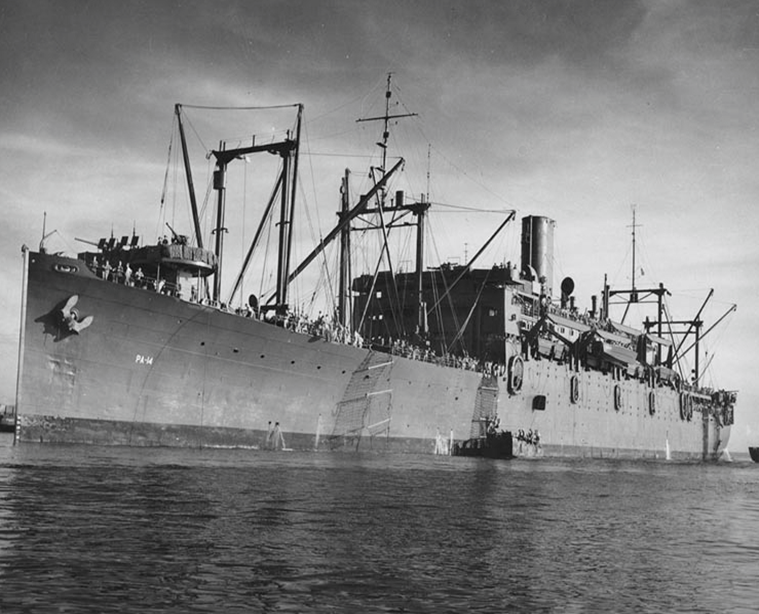USS Hunter Liggett
(War Service Dates: June 1941 – March 1946)
My Uncle, a WWII veteran, does not talk much about his time spent in the war effort. But one day he did share some of his experiences on a troop ship named the USS Hunter Liggett. He did not spend a great amount of time on it. Mostly he was on the ship while being transported from one place to another. It seems all his memories are pleasant.
The Hunter Liggett is not one of those war ships romanticized by Hollywood, so most of us are probably not too familiar with it. Its history, though, has now become personal to me. So here is its story.
Built in 1922 by the Bethlehem Shipbuilding Corp.in Sparrows Point, Md., the Hunter Liggett began its life as a commercial vessel. It sailed for many years as passenger ship before being acquired by the Army and renamed Hunter Liggett (AP-27) in February 1939 after Lt. Gen. Hunter Liggett (1857 – 1935). General Liggett served as General Pershing’s chief of staff as well as the commanding general of First Army and Third Army.
As a transport vessel it operated from New York to San Francisco and the West Coast to Hawaii. In May 1941 the ship was turned over to the Navy. During WWII the USS Hunter Liggett was assigned to the Asiatic-Pacific Theater.
In April 1942 the ship and its Coast Guard crew were ordered to the Pacific to take part in the occupation of Guadalcanal after amphibious training and a rehearsal landing in the Koro Islands. Eventually the Hunter Liggett joined up with other ships and sailed for the Solomon Islands. After arriving at Guadalcanal on 6 August 1942, a couple days later she was engaged in air attacks and her gunners shot down several attackers. The assault on the Solomon’s lasted several days. The American Task Force assigned to engagement off Sayo Island suffered heavy losses. The Hunter Liggett and other transports rescued survivors from the battles.
In October 1942, the Hunter Liggett returned to Guadalcanal loaded with marines. She remained on duty in Guadalcanal for most of the next year. She carried needed equipment, marines, and Japanese prisoners to and from the embattled island. By the end of year, she had returned to America for much needed repairs.
In April 1944, the Hunter Liggett began a new career as an amphibious training ship. Her purpose was to teach the lessons learned in the Solomon’s to those assigned to carry out assaults at Leyte, Iwo Jima, Okinawa, and other assault locations.
By August 1945, victory had been declared in Europe and Japan had surrendered. Military personnel, scattered all over the world, now had to come home. Operation Magic Carpet was the codename of the effort used to bring them home. It began in December 1945 and continued for the next fourteen months. During that period an average of 435,000 military personnel were being transported back from the Pacific every month.
The Hunter Liggett joined the “Magic-Carpet” fleet 10 December 1945. She made voyages to Ulithi, Guam, Pearl Harbor, and Palaus before reporting to Olympia, Wa and returned to the Army on 9 March 1946. The Hunter Liggett was decommissioned on 18 March 1946. On 30 January 1948, she was sold to Boston Metals Company for scrapping.
Hunter Liggett received four battle stars for its service during WWI. The US Coast Guard Academy in New London, Connecticut continued its legacy by naming Hunter Liggett Avenue after the ship.
The link below is my you-tube video of the ship, which includes some WWII actual video.
https://www.youtube.com/watch?v=swBHBX-F3jY&t=1s

